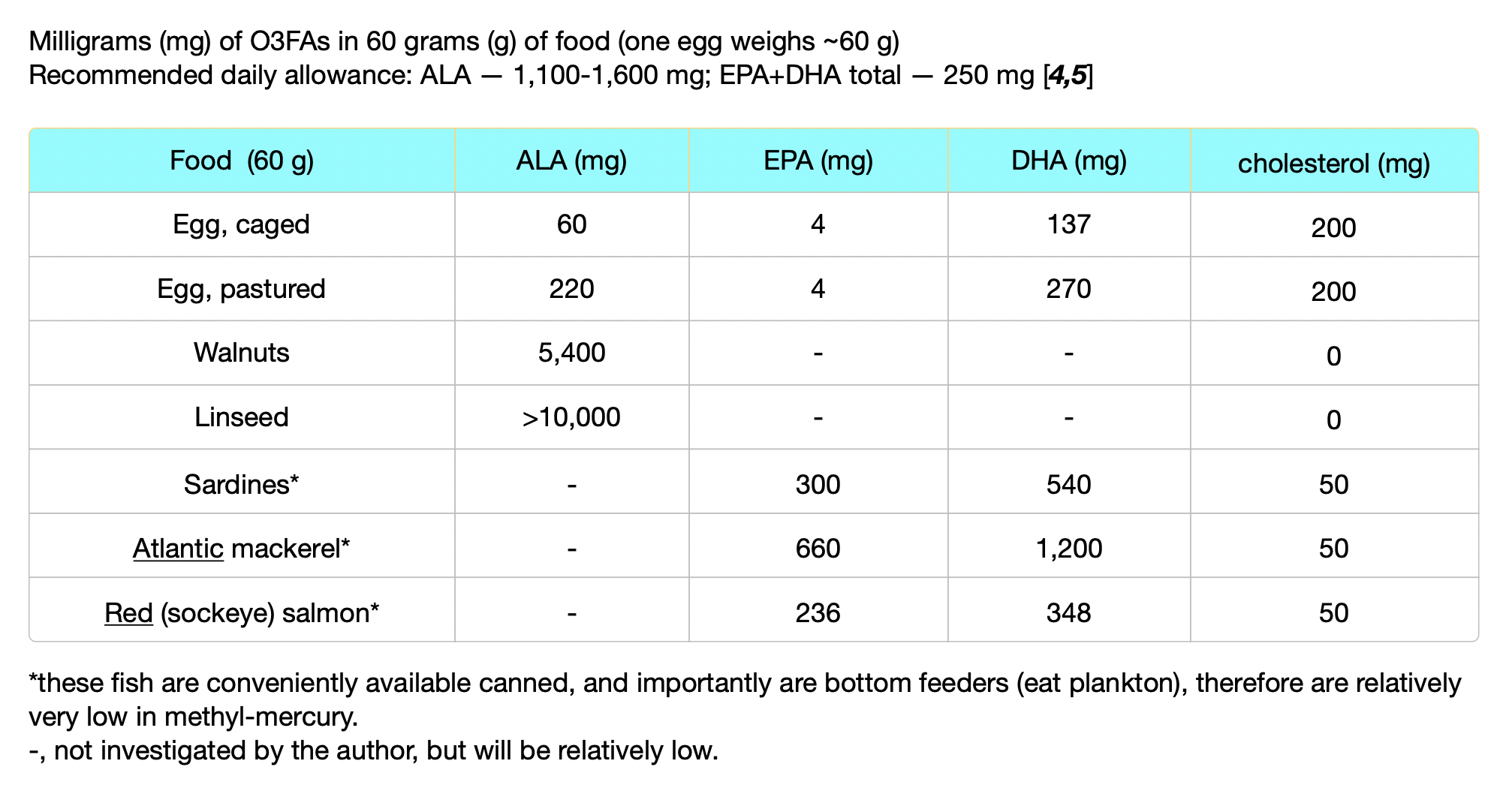
Poultry resources links
- Poultry Hub Australia
- Raising chickens for egg production, Jacob J. (2015) extension.org
- Poultry keeping on a small scale, Bolla et al. (2003) agnote DAI-295, NSW Agriculture
- Hy-Line Technical Resources
- Lohmann Tierzucht Management Guides
- Egg Farmers of Australia
- Australian Eggs
- Egg Production Systems in Australia
- Australasian Poultry Magazine
- Poultry Digest
- National Poultry Newspaper
Other links
- Cleaning eggs
- Broody hen management
- Leg rings: flat coiled (16 mm) is good for a standard chook, e.g. Hy-Line
- Dealing with lead (Pb) contamination in urban areas. Eggs from backyard chickens can contain substantially more lead than commercial eggs [1].
Omega-3 polyunsaturated fatty acids (O3-PUFAs or O3FAs) are nutrients important for vascular and neuronal health [2]. Egg yolks are a good source of O3FAs, particularly if hens have access to pasture or are fed greens [3]. However, some nuts, seeds and fish are much better sources of O3FAs than eggs [4-6] (see Table below). Significant O3FAs to consider are ALA (sourced mainly from plants), which undergoes a low rate of conversion by the body to the two most important forms, EPA and DHA (sourced mainly from fish). To boost O3FAs in eggs, or to produce an ‘omega-3 egg’, it is not uncommon to feed hens linseed (also called flax) which is high in ALA. This can increase ALA but not necessarily EPA or DHA content [7]. The downside of feeding linseed is a possible negative effect on egg weight and shell quality [8]. Eggs are high in cholesterol (see Table below) but their consumption has little effect on blood cholesterol levels [9].

Legislation
In a Neighbourhood Residential Zone under Section 32.09 of the Victorian Planning Scheme no permit is required for keeping 1-2 animals, while a permit is required for keeping 3-5 animals. However councils often do not require a permit for 3-5 or even more animals. For example, Maribyrnong allows keeping up to 10 hens without a permit. Some councils do not specify on their websites the number of animals that can be kept—aside from cats and dogs.
Regulations for the housing of chickens in Victoria:
Prevention of Cruelty to Animals (Domestic Fowl) Regulations 2016
1. Yazdanparast T et al., Lead poisoning of backyard chickens: Implications for urban gardening and food production, Environmental Pollution, 310: 119798 (2022).
2. Shahidi F & Ambigaipalan P, Omega-3 polyunsaturated fatty acids and their health benefits, Annual Review of Food Science and Technology, 9: 345-381 (2018).
3. Karsten HD et al., Vitamins A, E and fatty acid composition of the eggs of caged hens and pastured hens, Renewable Agriculture and Food Systems, 25: 45-54 (2010).
4. Food product labels.
5. Omega-3 fatty acid fact sheet, Office of Dietary Supplements, National Institutes of Health, USA.
6. Interim summary of conclusions and dietary recommendations on total fat and fatty acids. Joint FAO/WHO Expert Consultation (2008).
7. Jia W et al., The effect of enzyme supplementation on egg production parameters and omega-3 fatty acid deposition in laying hens fed flaxseed and canola seed, Poultry Science, 87: 2005-2014 (2008).
8. Balance D. Producing omega-3 enriched eggs.
9. Eggs and cholesterol, Heart Foundation, New Zealand.